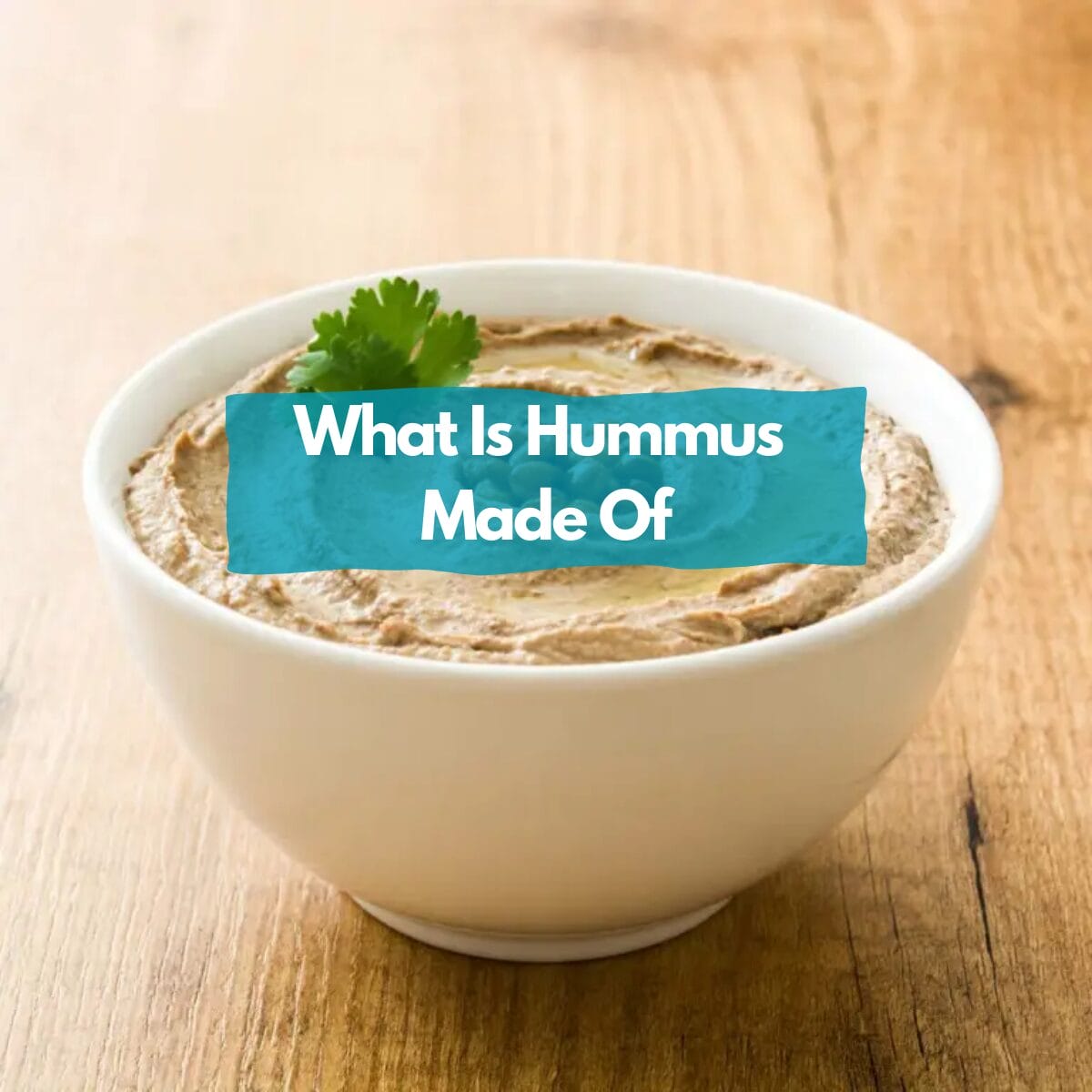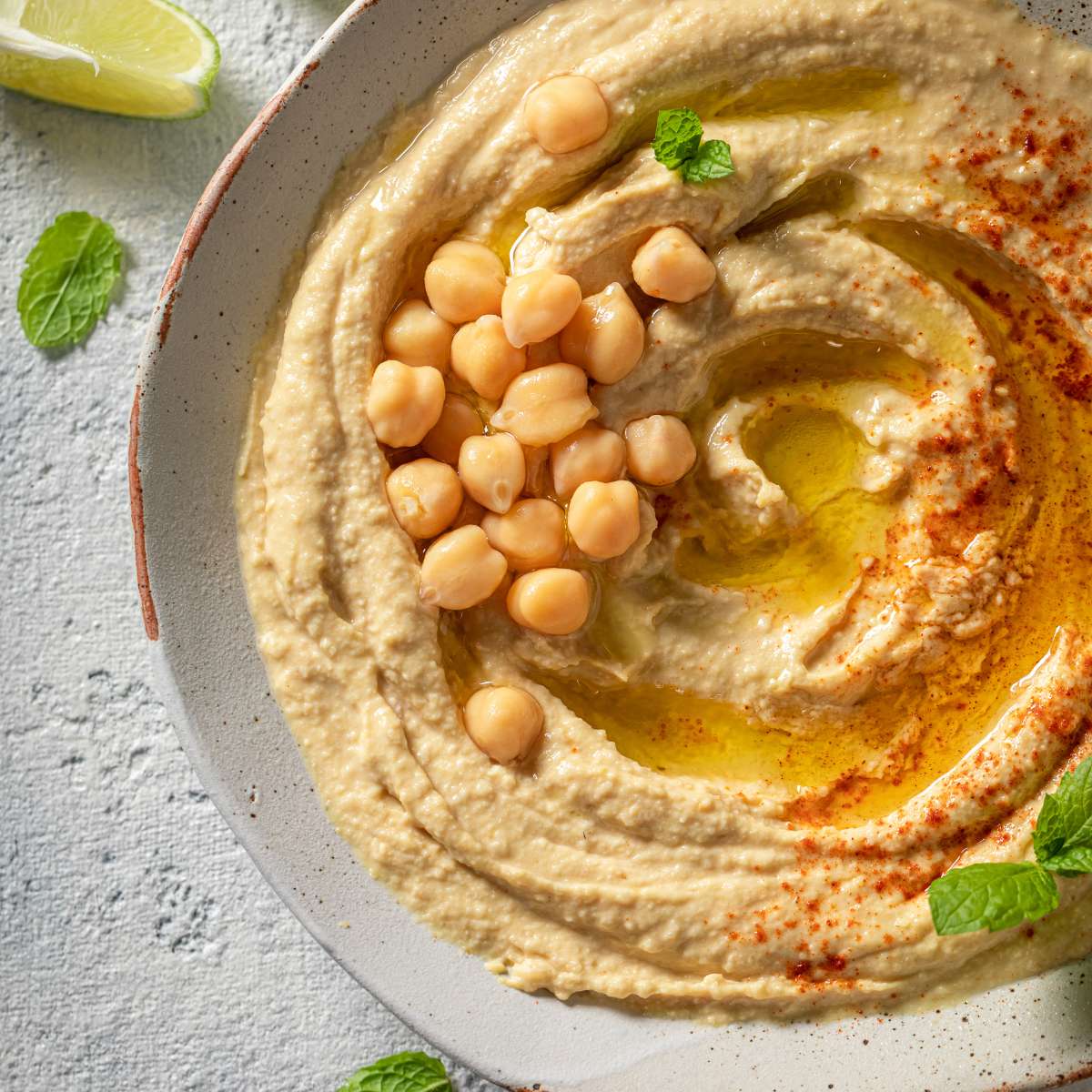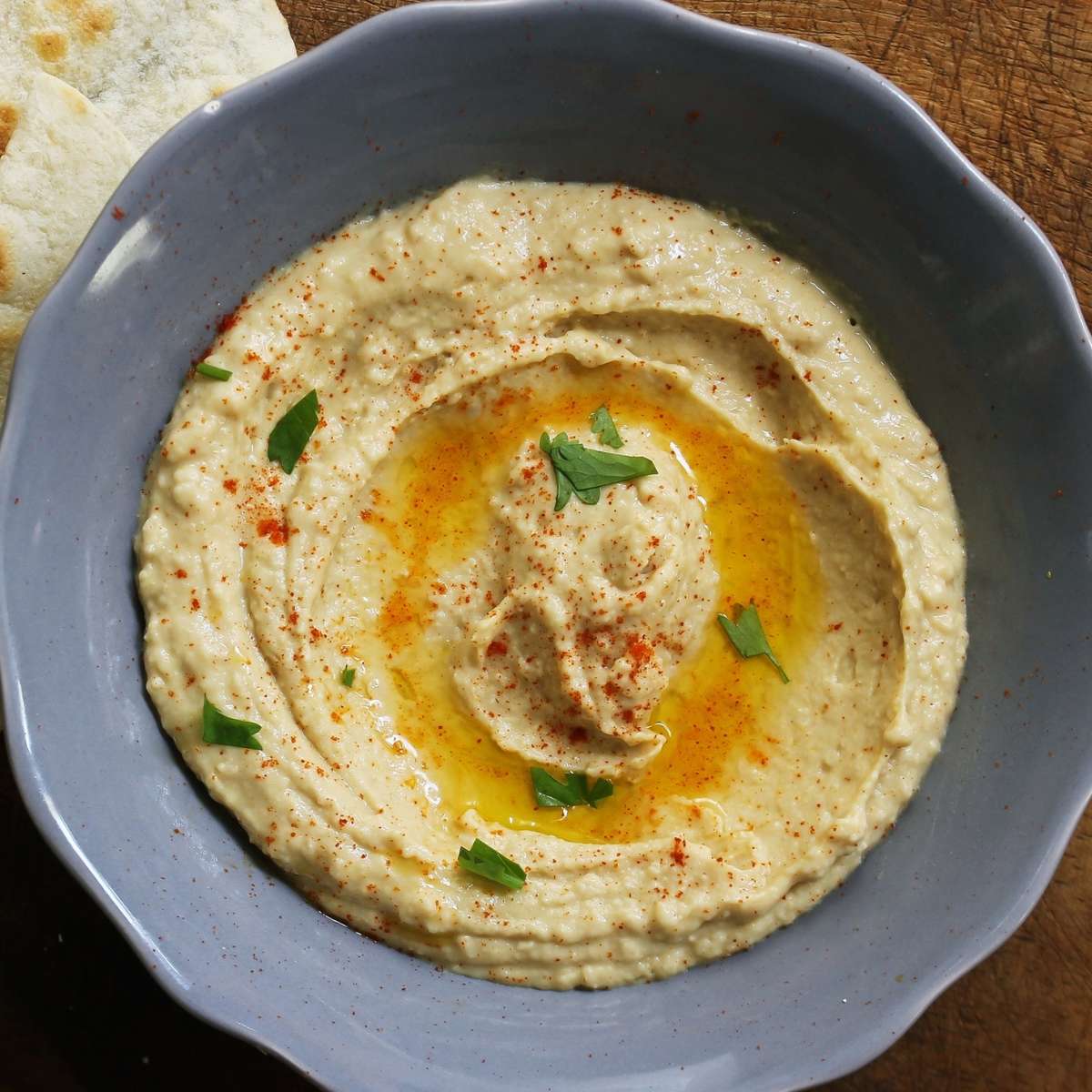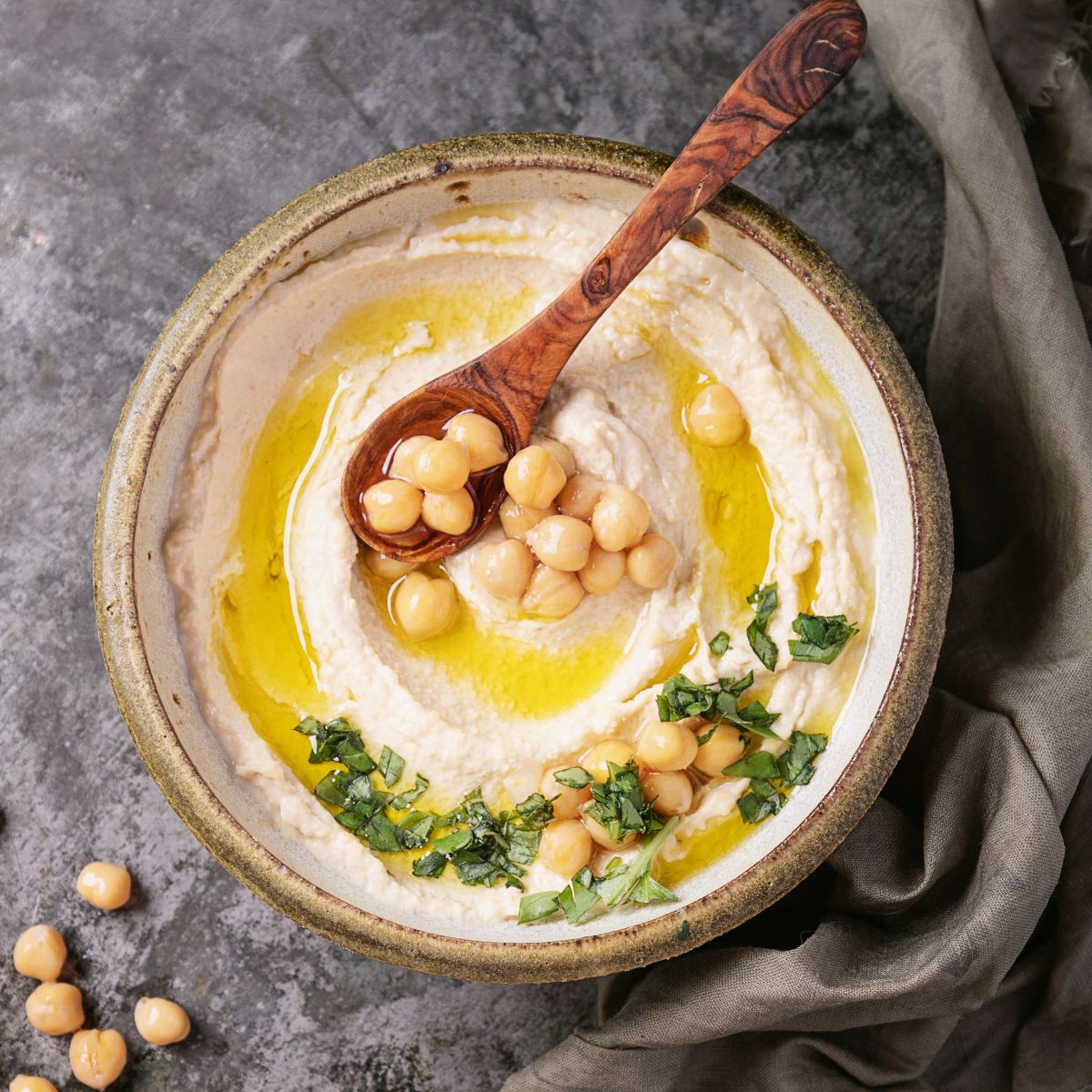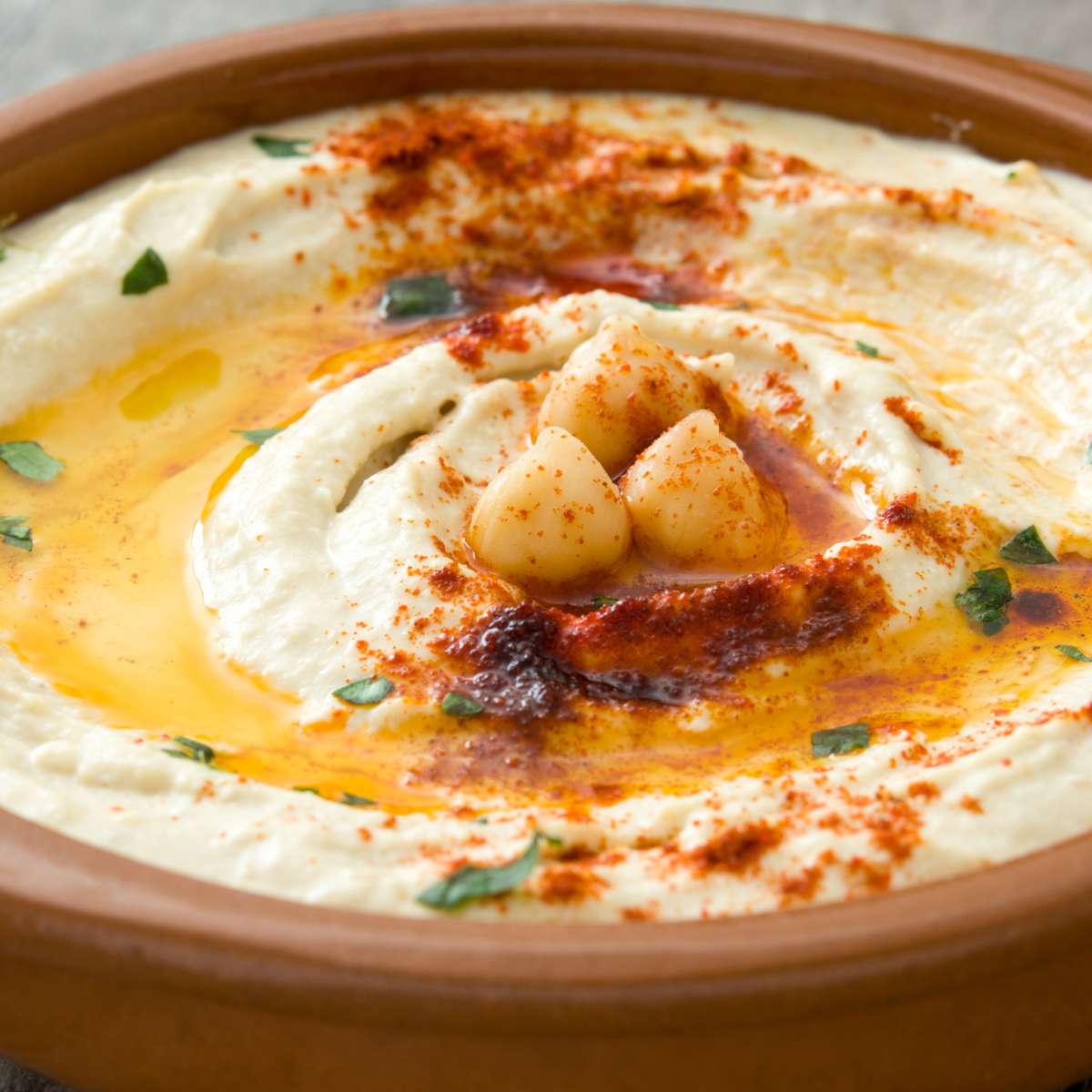Ever wondered what is in that creamy, delicious dip known as hummus? This guide delves into what is hummus made of, revealing the simple yet splendid ingredients behind this beloved dish. Combining chickpeas, tahini, lemon juice, and garlic, hummus not only satisfies the taste buds but also packs a nutritional punch.
As we explore the origins and the components that make up hummus, we’ll see why this food has captured the hearts of culinary enthusiasts worldwide. Stay tuned as we unpack the flavors and facts that make hummus a staple in kitchens around the globe.
A Dip with Ancient Roots: The Origins of Hummus
Hummus isn’t just a delicious dip; it’s a historical journey on a plate. This popular dish can trace its origins back to ancient Egypt, where ingredients like chickpeas were staples in the Pharaonic diet. Archaeologists suggest that the simplicity and availability of its ingredients allowed hummus to sustain not just royalty but common folks throughout history.
Historical records mention a similar mixture of chickpeas, vinegar, lemon, herbs, and spices being consumed in Cairo during the 13th century. These culinary traditions slowly spread across the Mediterranean, influencing various cultures and cuisines along the way.
By the 20th century, hummus had evolved beyond the confines of royal dining to become a beloved part of everyday meals in the Middle East, celebrated for its nutritious value and ease of preparation. Today, it’s embraced globally, found in nearly every supermarket and served in countless restaurants worldwide.
This spread has transcended mere nourishment to become a symbol of cultural exchange and adaptation, highlighting its role in the culinary dialogues between the East and West. So next time you enjoy hummus, remember it’s not just a snack but a piece of culinary history that has survived and thrived for centuries.
Related Article: To delve into another staple of Middle Eastern cuisine, explore our article on what is Tzatziki Sauce, a refreshing and creamy complement to many dishes similar to hummus.
What is Hummus Made Of: The Signature Ingredients
To truly appreciate hummus, it helps to know what goes into creating this creamy, flavorful dip. While simple, the ingredients in hummus are each critical to its final taste and texture. Let’s explore the classic components that make hummus the beloved dish it is today.
Chickpeas
Chickpeas, also known as garbanzo beans, are the backbone of any traditional hummus recipe. Rich in protein and fiber, chickpeas not only contribute to the nutritional value of hummus but also provide the base texture and subtle, nutty flavor that defines the dish.
Tahini
Tahini, a paste made from toasted ground sesame seeds, is essential for adding a rich, creamy texture to hummus. Its slight bitterness complements the sweetness of the chickpeas, while its smooth, buttery consistency enhances the overall mouthfeel of the dip.
Related Article: To explore more about tahini, check out our detailed guides on tahini nutrition facts and tahini’s suitability for vegan diets. These resources will provide you with a comprehensive understanding of tahini’s health benefits and dietary considerations.
Lemon Juice and Garlic
Lemon juice brings a necessary acidity to hummus, cutting through the richness and balancing the flavors. It adds a fresh, citrusy zest that is vital for the characteristic tang of hummus. Garlic, meanwhile, provides a sharp, aromatic punch that elevates the dip from good to great, infusing it with a depth of flavor that is unmistakable.
Extra-Virgin Olive Oil
Extra-virgin olive oil is used both in the mixing process and as a finishing touch on hummus. In the mix, it helps to smooth out the texture and integrate the flavors. Drizzled over the top before serving, it adds a touch of luxury, enhancing the mouthfeel and contributing its fruity, peppery notes to the final product.
| Ingredient | Flavor Profile | Health Benefit |
|---|---|---|
| Chickpeas | Nutty, earthy | Rich in protein and fiber |
| Tahini | Creamy, bitter hint | Loaded with healthy fats |
| Lemon Juice | Citrusy, fresh | High in vitamin C |
| Garlic | Pungent, aromatic | Antioxidant properties |
| Extra-Virgin Olive Oil | Fruity, peppery | Monounsaturated fats for heart health |
Unveiling the Variety: Types and Twists of Hummus
Hummus has evolved from its traditional roots into a vibrant array of flavors that cater to diverse palates and dietary preferences. Let’s explore some popular hummus variations that bring new life to this classic dish with exciting ingredients and unique pairings.
Traditional Hummus
At its core, traditional hummus combines chickpeas with tahini, olive oil, lemon juice, and garlic, resulting in a creamy and nutty flavor that’s both versatile and timeless. It’s best paired with pita bread or fresh veggies for a light and healthy snack.
Roasted Red Pepper Hummus
This version introduces roasted red peppers to the mix, adding a sweet and smoky undertone to the classic hummus base. It’s ideal for serving with crispy chips or as a tasty pairing for grilled chicken, adding a kick that complements the meat’s smokiness.
Black Bean Hummus
Substituting black beans for chickpeas, this hummus variant presents a rich and earthy flavor that stands out in Tex-Mex cuisine. It pairs wonderfully with corn chips or quesadillas, offering a hearty and satisfying option for those seeking a different kind of dip.
Edamame Hummus
Using edamame beans, this lighter, herbal alternative to traditional hummus is perfect for those looking for a fresh twist. Its subtle flavors make it a delightful pairing with cucumber slices or as an unconventional yet delicious dip for sushi, especially with dishes like red snapper sushi.
How to Make Hummus at Home
Ready to master the art of making hummus? Creating your own hummus at home is an easy and rewarding way to explore the versatility of this popular dip. With just a few simple ingredients and your trusty food processor, you can whip up a batch of fresh, flavorful hummus.
Here’s a not-so-secret recipe to get you started:
- Canned chickpeas (the humble protagonist)
- Freshly squeezed lemon juice (for that citrus flare)
- Tahini (the silky sesame enhancer)
- Minced garlic cloves (be as bold as your palate permits)
- Olive oil (for the smooth operator effect)
- Cumin (a little spice never hurt anybody)
- Salt (the flavor magnifier)
- Water (only if you’re aiming for a little more silk in that texture)
Once you’ve gathered your cast of characters, it’s showtime! Toss them into the food processor, and blend until the chickpeas have surrendered their chunky nature to become part of the creamy dream. Now you’ve got the base of your homemade hummus, but why stop there? It’s time to dress it up and take it out on the town!
| Your Hummus | Dynamic Twists |
|---|---|
| Plain Jane Hummus | Sun-Dried Tomato Tango |
| Classic Chickpea | Roasted Red Pepper Rumba |
| Monochrome Masterpiece | Feisty Jalapeño Jive |
| Tahini Solo | Garlic and Herb Groove |
Making hummus at home allows you to control the ingredients and flavors, creating a healthy, customized snack that’s perfect for sharing. Whether you keep it classic or get creative with flavors, homemade hummus is a delicious way to enjoy a healthy treat right from your kitchen.
Conclusion
In wrapping up our exploration of hummus, we’ve seen how this ancient dish continues to capture hearts with its simplicity and versatility. Made primarily from chickpeas, tahini, lemon, and garlic, hummus isn’t just a dip—it’s a nutritional powerhouse offering protein, fiber, and healthy fats.
Each ingredient in hummus plays a vital role, contributing to its signature flavor and creamy texture. Whether enjoyed as a snack with fresh vegetables or as a spread on your favorite sandwich, hummus is more than just food; it’s a testament to the rich culinary traditions that span cultures and generations. So next time you enjoy this delicious spread, remember that you’re savoring a piece of history.
FAQ
Are all hummus vegan?
Traditional hummus is vegan, as it contains only plant-based ingredients. However, some commercial or specialty recipes might include non-vegan additives or toppings.
What role does tahini play in traditional hummus recipes?
Tahini is like that secret ingredient in a magic potion. It adds a luxurious creaminess and nuttiness that makes the hummus so irresistibly good. Without it, hummus just wouldn’t be the same; it’s what gives the dip its heart-healthy richness.
Can hummus be made without tahini?
Yes, hummus can be made without tahini. Some tahini substitutes include sunflower seed butter or Greek yogurt, which can add a similar creaminess and depth of flavor. Some variations also use other kinds of nut butter or omit them entirely for a lighter version, though tahini is key for the classic taste.
How can I make hummus more flavorful if I find it bland?
Enhance hummus by adding spices like cumin or paprika, herbs like cilantro or parsley, or additional garnishes like roasted red peppers or caramelized onions to boost its flavor.
Are there any common allergens in hummus?
The main allergens in hummus could include sesame (from tahini) and garlic. Those with sensitivities should check recipes or labels carefully.
Can I consider hummus a healthful dip? What are the nutritional benefits?
Absolutely! Hummus is your trusty sidekick in the quest for health. It’s a protein-rich champion, loaded with dietary fiber, heart-healthy fats, and a bunch of essential nutrients. Not just tasty, hummus is practically a nutritional superhero in a bowl.
What are some creative ways to use hummus beyond a dip?
Hummus can be used as a spread on sandwiches or wraps, as a creamy base for dressings, or even incorporated into savory dishes like stuffed peppers or mashed potatoes.
